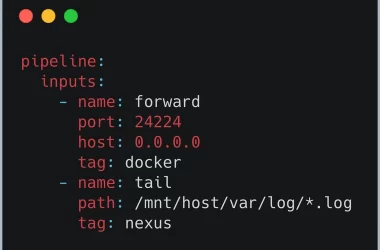📦 Why Resumable Uploads?
Uploading large files comes with risks - unstable connections, browser crashes, or poor bandwidth can cause full uploads to fail. Instead of starting over every time, resumable uploads allow you to:
✅ Upload files in small chunks
✅ Resume if the connection breaks
✅ Prevent re-uploads of completed files
✅ Efficiently handle large files (GBs+)
In this tutorial, we’ll build a fully working Resumable File Uploader using React (Frontend) and Node.js (Backend), powered by the resumable.js library.
🧰 What You’ll Learn
Chunked uploads with resumable.js
Handling file chunks in Node.js with multer
Merging chunks into a complete file
Preventing duplicate uploads using localStorage
Deleting chunks after merge for clean storage.
⚙️ Project Setup
🔹 Backend: Express + Multer
Let’s create a simple Express server to handle chunk uploads.
mkdir resumable-uploader-backend
cd resumable-uploader-backend
npm init -y
npm install express multer cors
Create server.js with
// ✅ server.js
const express = require(“express”);
const cors = require(“cors”);
const fs = require(“fs”);
const path = require(“path”);
const multer = require(“multer”);
const app = express();
app.use(cors());
app.use(express.json());
app.use(express.urlencoded({ extended: true }));
const UPLOAD_DIR = path.join(__dirname, “uploads”);
if (!fs.existsSync(UPLOAD_DIR)) fs.mkdirSync(UPLOAD_DIR);
🧩 Handling Chunk Uploads and Merge
// Check if chunk exists (resumable.js uses this to skip duplicates)
app.get(“https://dev.to/upload”, (req, res) => {
const { resumableIdentifier, resumableChunkNumber } = req.query;
const chunkFile = path.join(UPLOAD_DIR, ${resumableIdentifier}.${resumableChunkNumber});
fs.existsSync(chunkFile) ? res.status(200).send(“Found”) : res.status(204).send(“Not Found”);
});
// Upload chunk with Multer
const storage = multer.diskStorage({
destination: (req, file, cb) => cb(null, UPLOAD_DIR),
filename: (req, file, cb) => {
const { resumableIdentifier, resumableChunkNumber } = req.body;
cb(null, ${resumableIdentifier}.${resumableChunkNumber});
},
});
const upload = multer({ storage });
app.post(“https://dev.to/upload”, upload.single(“file”), (req, res) => {
res.status(200).send(“Chunk uploaded”);
});
Merging Chunks + Deleting After Use
app.post(“https://dev.to/merge”, (req, res) => {
const { filename, totalChunks, identifier } = req.body;
const finalPath = path.join(UPLOAD_DIR, filename);
const writeStream = fs.createWriteStream(finalPath);
let index = 1;
const appendChunk = () => {
const chunkPath = path.join(UPLOAD_DIR, ${identifier}.${index});
fs.createReadStream(chunkPath)
.on(“error”, err => res.status(500).send(“Chunk read error”))
.on(“end”, () => {
fs.unlink(chunkPath, () => {});
if (++index <= totalChunks) appendChunk(); else writeStream.end(() => res.send(“File merged successfully”));
})
.pipe(writeStream, { end: false });
};
appendChunk();
});
app.listen(5000, () => console.log(“✅ Server running on http://localhost:5000″));
Frontend: React + Resumable.js
Install in your React app:
npm install resumablejs
📁 ResumableUploader.js
import React, { useEffect, useRef, useState } from “react”;
import Resumable from “resumablejs”;
const ResumableUploader = () => {
const browseRef = useRef(null);
const [uploadProgress, setUploadProgress] = useState(0);
const [status, setStatus] = useState(“”);
const resumableRef = useRef(null);
const handleFileAdded = (file) => {
const uploaded = JSON.parse(localStorage.getItem(“uploaded”) || “[]”);
if (uploaded.includes(file.uniqueIdentifier)) {
setStatus(“File already uploaded.”);
return;
}
setStatus(“Uploading…”);
resumableRef.current.upload();
};
const handleFileSuccess = async (file) => {
const uploaded = JSON.parse(localStorage.getItem(“uploaded”) || “[]”);
uploaded.push(file.uniqueIdentifier);
localStorage.setItem(“uploaded”, JSON.stringify(uploaded));
await fetch(“http://localhost:5000/merge“, {
method: “POST”,
headers: { “Content-Type”: “application/json” },
body: JSON.stringify({
filename: file.fileName,
totalChunks: file.chunks.length,
identifier: file.uniqueIdentifier,
}),
});
resumableRef.current.removeFile(file);
setStatus(“Upload complete and merged.”);
};
useEffect(() => {
const r = new Resumable({
target: “http://localhost:5000/upload“,
chunkSize: 1 * 1024 * 1024, // 1MB
fileParameterName: “file”,
testChunks: true,
throttleProgressCallbacks: 1,
});
resumableRef.current = r;
r.assignBrowse(browseRef.current);
r.on(“fileAdded”, handleFileAdded);
r.on(“fileProgress”, file => setUploadProgress(Math.floor(file.progress() * 100)));
r.on(“fileSuccess”, handleFileSuccess);
r.on(“fileError”, () => setStatus(“Upload failed.”));
}, []);
return (
Resumable File Uploader
Choose File
{uploadProgress > 0 && (
<>
{uploadProgress}%
)}
{status &&
Status: {status}
}
);
};
export default ResumableUploader;
✅ Final Result
Upload large files chunk-by-chunk
Resume even after refreshing
See real-time progress
Auto-merge on success
Clean up disk space by deleting chunks
🧠 Final Thoughts
Chunked uploads are essential for large files and unstable connections. With resumable.js, React, and Node.js, you get full control and reliability.
This setup can easily be extended to:
🔒 Secure uploads via JWT tokens
☁️ Upload to AWS S3 or Google Cloud
🧼 Auto-clean expired chunks
📂 Organize files per user or project





